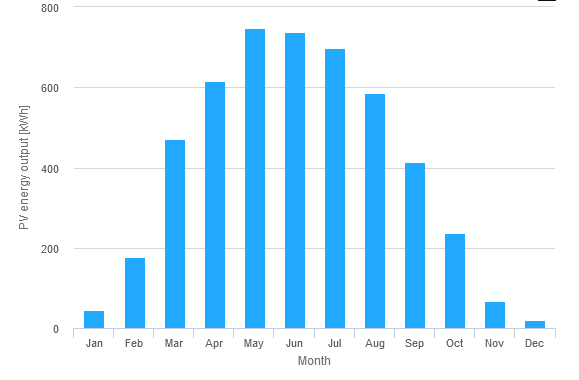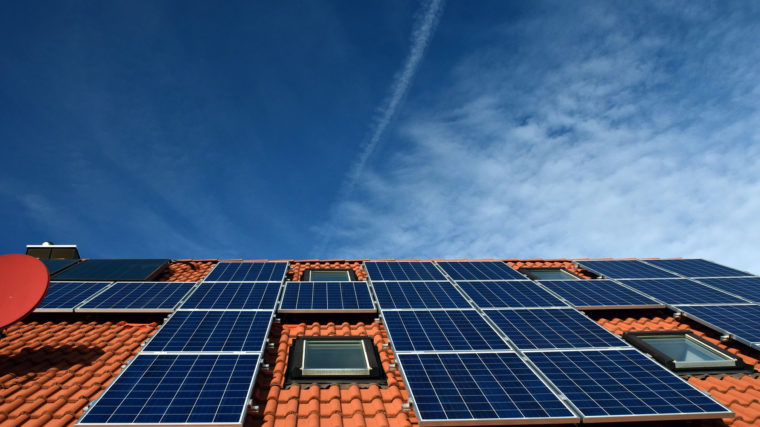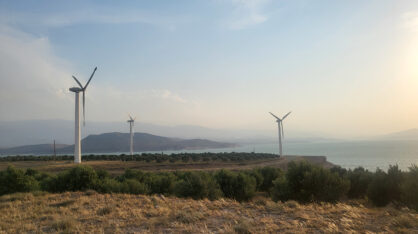Introduction
The rising cost of energy and uncertainties in the energy market have created the need for consumers to explore the rooftop solar PV market. The key drivers to the growth of can be attributed to increasing awareness of solar panels in homes and the growing need to reduce greenhouse gases. The PV solar rooftop has a potential to provide households and commercial consumers with both energy consumption and energy savings. The total installed capacity of solar PV plant in Finland in 2019 is estimated be 203 MW with 45% installed in residential homes, 30% commercial buildings and 25% of industrial facilities (LUT, 2019).
The purpose of the paper is to provide information on the levelized cost of energy for rooftop solar systems and its potential in Finland. This article is presented as follows: a brief overview of types of solar energy systems, and solar rooftops, followed by a demonstration of levelized cost of energy (LCOE), and recommendation and conclusions. The LCOE calculation method is a widely accepted economic tool for assessing the economic viability of different energy generation technologies as well as of specific projects, and it enables the evaluation of different energy technologies with respect to their cost.
The key components of a PV Solar system are the solar panel, charge controllers, a battery, inverter, direct current (DC) loads, and alternating current (AC) loads. The solar panel receives energy from the sunlight and converts it into electrical energy. The charge controller is the equipment that regulates the battery, and the battery stores the DC electrical energy obtained from the solar panel. The inverter is the electrical device that changes direct current to alternating current. DC loads are appliances and equipments powered by direct current and AC loads are appliances and equipments driven by alternating current.
The are two types of solar PV systems: off-grid and grid-tied depending on how they are configured and connected to the the utility grid. The off-grid solar PV can be configured as a DC system without an inverter and AC with an inverter. A DC system without an inverter has solar energy connected to the DC loads, and excess energy stored in the battery is regulated by a charge controller. An off-grid AC systems with an inverter converts the DC to AC electricty for AC electrical appliances with surplus energy stored in batteries. There are two types of grid-tied solar systems: with battery storage or no battery storage. In a grid-tied with battery storage, the generated AC is consumed on site or stored in a battery. The charge controller regulates the battery voltage and surplus energy stored in the battery as a back up. If the solar PV system cannot provide adequate power, the required energy can provided by the grid (see Figure 1). In a grid-tied system without battery storage, the DC and AC energy generated is used on site and the grid utility acts a power reserve (see Figure 2).


The solar power production is monitored by the solar production meter. Two commonly available configurations for solar rooftops are the rooftop solar PV system with or without battery storage. The common marketing segments are residential and commercial, described as small rooftop systems (≤ 30 kWp), and large rooftop systems (> 30 kWp) (Fraunhofer ISE 2021). In this study, the focus is on grid-tied solar rooftoop without batteries. The key providers of residential solar rooftops in Finland are electricity utilities and retailers, such as local electrical installation companies. Household electricity prices include transmission, distribution, electricity tax, levies and VAT (24 %).
Method
The LCOE is calculated for rooftop PV generation for 5 kWp (small residential) in Vaasa region. The current study focuses on 5 kWp for potential small residential customers since a similar study has been performed at the EU level for certain countries (Vartiainen et al., 2019) to ensure comparability of results. In addition from an investment perspective, the financing of 5 kWp is affordable to most consumers and meets the energy needs of average household in Finland. The LCOE is determined by comparing all costs incurred over the lifetime of the power plant for the installation and operation and the total amount of energy generated. LCOE can be computed using the net present value method (NPV) or the annuity method. When using net present value approach, the expenses for the investment, as well as the payment flows of revenues and expenditures during the lifetime of the power plant, are calculated by discounting related to a shared reference date (Konstantin, 2013; Fraunhofer ISE, 2021). In the annuity method approach, the LCOE is calculated by adding the annuitized capital cost and the annual operating expense and dividing by the quantity of electricity generated (Allan et al. 2011; Lai und McCulloch 2016). The LCOE should be lower for the feed-in tariff or current electricity price. For this article, the annuity method is employed and calculated as follows in based on the following formula (Schmidt, 2012).

The cost information for the installation of a 5 kW system is obtained from an expert installer in residential solar PV installation in Vaasa (aurinkopaneelikauppa.fi). The researcher visited the company in Vaasa and conducted an interview on solar PV installation for residential homes. The interviewee stated that the operation and maintenance expenses (O & M) for the 5 kW residential roofstop system is zero. For the purpose of this study, we applied O & M expenses as 0.5% of the total investment cost. Residential homes can be financed with a loan rate from 0-2% (LUT, 2019). The study assumed an interest rate of 4% adjusted for inflation rate of 2%. The study also assumed that the inverter would be replaced after 7 years, and the life cycle of 20 years. The summary cost information is presented in Table 1. The total investment cost include the VAT.The mean annual energy generation for Vaasa is obtained from PVGIS (see Figure 3). The annual yearly production is estimated to be 4810.69 kWh and yearly in-plane irradiation is 1199.22 (kWh/m2) is derived from PVGIS.
| Key items | Financial parameters |
|---|---|
| Cost of 5 kW solar PV | 4490 € |
| Installation cost | 1800 € |
| Duration of PV | 20 years |
| Inverter replacement | 7 years |
| Interest rate (inflation adjusted) | 4% |
| Mean Annual electricity | 4810 kWh |

The LCOE for 5 kW is calculated as:

Conclusion and discussion
The results of the study shows the LCOE for a rooftop solar PV located in Vaasa is about 120€/MWh. This is consistent with results of previous study (Vartiainen et al. 2019) that shows PV LCOE for a 5 kW rooftop varies between 75€/MWh Spain to 135€/MWh in Sweden. The authors forecast that by 2030 the PV LCOE would approach 45-80 MWh for a 5kW residential rooftop solar taking the performance ratio and learning rate into account. With current residential home electricity ranging from 13.9-21.9 euro cents/kWh, the LCOE is solar PV rooftop can be come very competitve. This is consistent with results of survey (LUT, 2019) that shows that solar PV is currently in Finland the second least cost option for new electric power generation after wind power. A benefit of the rooftop solar is that transmission charges for home consumption are elimated, which is a critical component of household electricity costs. With current energy crises and rising energy prices, there is a high potential for residential homes, schools, and hospital to explore the use of PV solar rooftop for energy consumption, potential energy savings and reduction in CO2 emissions. The energy crisis would keep evolving but more information is needed to create awareness of the potential of roofstop to contribute to the energy mix of Finland. In addition, future research on PV LCOE with batteries would provide potential for summer cottages, and hotels during the summer months.
Despite the benefits of using LCOE, there are uncertainties during the life cycle of energy technologies which can be difficut to capture. The LCOE can be used to support decisions and should not be the sole criteria for selecting and evaluating energy technologies.


